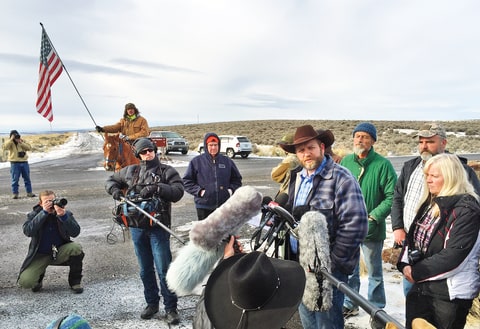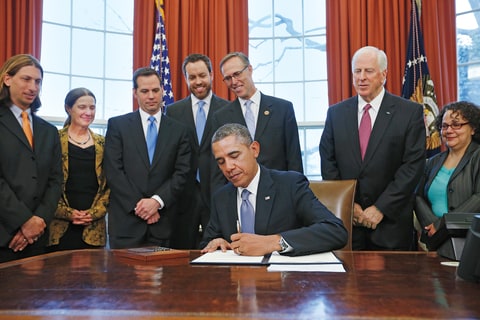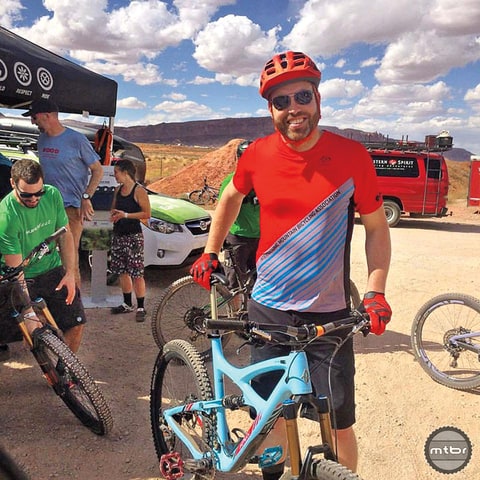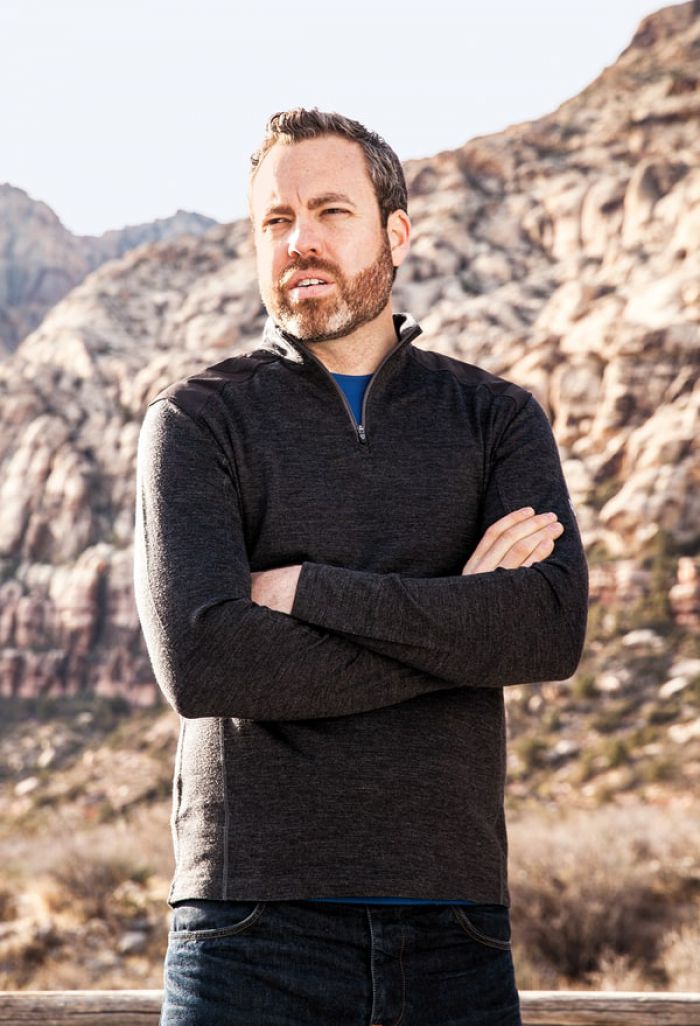Neil Kornze: The Man Cementing Obama’s Public Lands Legacy
Talk about a tough first week on the job. In 2014, just hours after Neil Kornze was sworn in as the youngest director in the history of the Bureau of Land Management (BLM), the federal agency that manages one-tenth of the nation’s surface area, he found himself facing a volatile standoff in his home state of Nevada. Militia members in support of rancher Cliven Bundy were threatening BLM agents tasked with rounding up and removing Bundy’s cattle from public land, where the government contended they were illegally grazing. The agents had confiscated hundreds of cattle, and Bundy’s camo-clad supporters were growing increasingly antagonistic. Kornze, then 35, the eloquent son of a gold miner, received a startling phone call from one of his agents in the field. The deputy said, essentially, "We’re surrounded." Bundy’s crew confronted BLM workers at a corral holding the cattle, and from a highway overpass, men aimed rifles at the agents. Kornze conferred with his boss, Interior Secretary Sally Jewell, then told his deputy to do whatever necessary to avoid bloodshed. The agents walked away, and Bundys’ supporters released the cattle. “We sent them packing,” Bundy’s son Ammon gloated soon afterward. He added, “The war has just begun.” Less than two years later, Ammon and his brother Ryan would lead the armed takeover of Oregon’s Malheur National Wildlife Refuge, escalating an ongoing battle over the fate of America’s public lands — one that’s primed to take center stage under the incoming Trump administration.
Now on his way out of office (he plans to resign at the end of Obama’s presidency), Kornze would still rather not talk about the most contentious event of his three-year tenure. In November 2016, after hiking with him at Colorado’s Browns Canyon National Monument — one of 11 protected areas created on BLM-managed land during his directorship — I brought up the Bundys. Kornze, now 38, paused behind the driver’s seat of a rental car. His normally restrained cadence tightened even further as he spoke about lessons learned: The BLM needs to tell “our own story” before others portray the agency’s work as federal overreach. That way, he says, “when we have difficult moments, it’s not the first time or the only time the public hears about their public lands.”
MORE: The New Federal Land Transfer Rules, Explained
 The Bundy crew after their showdown at the family's ranch in Gold Butte.
Keith Ridler / AP
The Bundy crew after their showdown at the family's ranch in Gold Butte.
Keith Ridler / AP
He seemed frustrated to be reminded of the standoff, which is natural. For three years the guy ushered in a significant shift on 245 million acres of public land, an area that is larger than Germany and includes Utah’s Grand Staircase Escalante Monument, Washington’s San Juan Islands, and Browns Canyon, a rafting and hiking paradise just outside the adventure hub of Salida, Colorado. Few people have wielded as much power over the way Americans recreate and consume energy as Kornze has, and directing the BLM is exciting as far as government work goes. (Kornze once ate reindeer with a Siberian Yupik tribe in the Bering Sea.)
But the job is also somewhat akin to presiding over an endless divorce case. The BLM serves ranchers and oilmen, environmentalists and raft guides, loggers and coal miners: a diverse constituency that doesn’t often agree about the direction of America’s vast public estate. Ask public-land advocates about his record, and you’ll hear a version of the same refrain: Kornze drastically improved an agency that has been derogatorily called the “Bureau of Livestock and Mining.”
ALSO: Are American Hunters the Last Great Hope for Conservation?
According to Nada Culver, the director of the BLM action center at the Wilderness Society, Kornze has led “the transformation of what the agency stands for. It’s no longer just there to approve permits to drill. It’s also there to protect wilderness and be a primo recreation destination across the West.”
In just three years, Kornze led an ambitious effort to create a renewable-energy program, facilitating the nation’s largest solar project (in California) and wind farm (in Wyoming). At the same time, he vastly expanded oil and gas production. “We have more than two years of drilling permits that are approved and ready to go,” he says. Yet the BLM also passed a landmark regulation requiring all oil and gas operators to capture the methane (a greenhouse gas some 25 times more damaging than carbon dioxide) normally lost to venting and flaring. Methane is also a large component of natural gas, used across the country for home heating, and Kornze is careful to speak about the regulation in terms of waste prevention, noting that enough methane is squandered to power “two Denvers.”
And to the delight of the $600 billion outdoor-recreation industry, Kornze is the first BLM director to acknowledge what mountain bikers, climbers, hunters, and anglers have long known: Many of the nation’s greatest playgrounds exist on BLM- and Forest Service–managed lands. In 2013, the BLM turned a largely forgotten parcel of land on Oregon’s Mount Hood into a world-class mountain-bike destination that receives 100,000 visitors a year. While riding there, Kornze recalls, “I almost ended up rearranging my face.” More significantly, he oversaw a monumental 10-state effort to create a conservation plan for the greater western sage grouse, thereby preventing an endangered species listing that could have hindered economic development in the West.
“He was able to bridge some seemingly unbridgeable gaps between Congress and the Obama administration,” says former BLM director Pat Shea.
 President Barack Obama created 11 BLM-managed national monuments during Kornze's tenure.
Charles Dharapak / AP
President Barack Obama created 11 BLM-managed national monuments during Kornze's tenure.
Charles Dharapak / AP
To steer through that gridlock was a feat; those familiar with Kornze, a Democrat who previously served as an adviser to former Senate minority leader Harry Reid, cite his centrist political skills. To him, the oil- and gas-industry groups that regularly blast and sue the BLM are just “folks” who are “having their voices heard.” That Kornze grew up in a family beholden to western extractive industries in the gold-mining boomtown of Elko, Nevada, also helped. He spent his youth hunting sage grouse and riding ATVs and mountain bikes in Nevada’s high desert. “I could get to the edge of town in five minutes,” he says, “and have the entire world to explore.” That world was public land.
No one knows the Trump administration’s plans for those lands, but there’s reason for concern, especially when it comes to the BLM’s recent work on renewable energy. Trump’s prospective interior secretary, Ryan Zinke, has said that climate change is “not a hoax, but it’s not proven science, either,” and is bullish on fossil-fuel development. Kornze’s cherished methane rule will likely be targeted by oil-friendly Republican lawmakers.
Still, Kornze is circumspect about the new regime. At one point, over pizza, he says, “I’m not excited to comment on the next administration.” He reveals little about his plans beyond a desire to spend time with his wife, a First Amendment attorney, and their one-year-old son. “I just hope I have enough time,” Kornze says, “to show my son all the amazing things that our country has.”
The Trump administration has now inherited the awkwardness that is the Bundy trial — Cliven and Ammon are both scheduled to face felony charges for the Gold Butte episode. Close observers say the case is a critical one, no less than a proxy fight for the fate of America’s public lands, given that the younger Bundys were shockingly acquitted for their role in the Malheur takeover. In recent years, a group of Republican lawmakers has led a call to “take back” America’s vast public estate and transfer it to the states — an eventuality that would likely lead to massive sell-offs. The Bundys represent the most fringe element of the movement, but the issue has recently gained a remarkable level of mainstream acceptance, including a recent budgetary maneuver that would make it easier to transfer the land to individual states for potential private sales.
 Kornze, here in Moab, is an avid mountain biker.
Courtesy Ibis Cycles
Kornze, here in Moab, is an avid mountain biker.
Courtesy Ibis Cycles
Suffice it to say, this is not an eventuality Kornze would welcome, but he doesn’t think privatization is a clear and present danger. “I spend a lot of time in the West and a lot of time with community leaders, and I just don’t hear that rhetoric on a personal level,” he says. Still, he acknowledges that all the messages can have an effect.
“If the airwaves are filled with discourse about privatizing, that should raise real questions for folks who love public lands,” he says. “One of the terms I cringe at is when people say ‘Forest Service land’ or ‘BLM land.’ We’re not the owners. We’re the managers. The American citizens are all public-land owners. I only wish that more Americans had the opportunity to get out and see and experience and be awed by what they own. But with that ownership comes responsibility.”
Responsibility can take on different forms: words, actions, and policies. The government’s decision to stand down in Nevada likely emboldened the Bundys at Malheur; when I suggested as much to Kornze in November, he just shook his head and declined to comment, citing the upcoming trial. But in December the Obama Administration announced two new national monuments on BLM land. They’re both near to Kornze’s heart, places he’s endorsed for protection. One is at Utah’s Bears Ears, a sacred site for Native American tribes. The other is at Gold Butte, next door to the Bundy’s ranch. When news of the designation broke, I thought back to something Kornze told me in Colorado: "Nevada is always on my mind."
